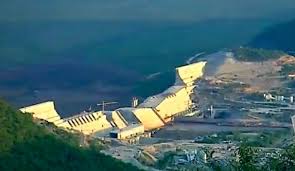The Grand Ethiopian Renaissance Dam (GERD) is a significant hydroelectric power construction on the Blue Nile River in Ethiopia that is undergoing the final stages of implementation. With construction approximately 96. At only 4% completion stage, this $4bn project aims to be Africa’s largest hydroelectric power station with a power generation capacity of over 5, 000 MW per year.
Project overview
Construction of the GERD started in 2011 and the dam has since attracted much attention in Ethiopia as a nation with ambitions of achieving economic growth and energy security. It is estimated that the completion of the dam will significantly augment the energy generation capacity of Ethiopia where such standard electrical facilities are available to only 40 % population. This increase in electricity generation will not only cater the domestic requirement of electricity but also help in exporting electricity to neighboring countries, which can bring a positive change in the Ethiopian economy.
Challenges
However, the GERD has been considered a sensitive issue in the region due to the issues between Ethiopia and the downstream countries namely Egypt and Sudan. Egypt has known water deficit anxiety since about 97% of its water resources originate from the Nile River and has made complaints that the construction of the dam might slow down the water flow to the extent of posing a challenge to it. Sudan has also raised certain concerns as it also expects outcomes similar to flood management or inexpensive power.
Nonetheless, Ethiopia has persisted with the dam’s construction, and reservoir impoundment noting that it will not affect inflows to the downstream countries. The Ethiopian government has been keen and insistent on claiming that the dam is needed to support development, power for the nation, and facilitate economic growth in Ethiopia. This stance has resulted in making the file ongoing discussions and diplomacy to resolve the issue raised by Egypt and Sudan with the help of the African union.
While financing of the GERD has been mainly obtained form domestic sources, such as government bonds and public fund raising, there exists a great commitment towards the construction of the project.
Scope
This has created ownership and pride among the people of Ethiopia which has propelled the advancement of this project despite heaps of bottlenecks including technicality and regional resistance. Given that the GERD is on the advancement stages to produce electricity, its potential benefits and effects to the region is still issue to debate. While for Ethiopia the dam is viewed as attaining energy needed for eventual energy sovereignty as well as an economic boost. But it also shows the politics of water management on cross-border water resources and the compelling need for the regional approach for the development of water resources projects in Nile Basin so that those projects benefits can be extended to all the riparian states.
In conclusion, the Grand Ethiopian Renaissance Dam is a massive undertaking with enormous impacts on Ethiopia as a country and also in the Horn of Africa continent as a whole. It will be a monumental achievement in assessing the long way Ethiopia has travelled in development and Internal and International co-operation and diplomacy in utilizing Trans boundary water resources.
Read also Grand Ethiopian Renaissance Dam (GERD) 94% Complete; Last Concrete to be Poured in September 2024
Read also Africa’s Tallest Iconic Tower Is Under Construction In Egypt

